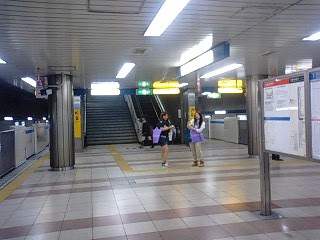
-
-
-
-
-
-
-
-
-
-
-
-
-
-
-
-
-
-
Last Tuesday I went to the massive
National Diet Library in Tokyo to do some research for my current project. This was my first visit to the library so I was excited and nervous, but thankfully I was accompanied by one of my instructors from the IUC, so I had a bit of assistance in navigating the complexities of the system, and a complex system it was.
The first order of business was to register for a one day user id card using an automated kiosk that asked for my name, address, etc. before spitting out a plastic card. To even get into the library we had to scan our cards at a gate, and then every action within the library required using the card. Before entering we deposited most of our belongings in a coin locker, only bringing wallets, paper, pencil, electronic dictionary, and notes into the library, all contained in a clear plastic bag provided near the entry.
Our first stop was the Modern Political History room, where I was searching for an edict referring to proper women's dress issued by the Meiji Empress. We entered the room, had the librarian scan our cards, and then he assisted us in finding the edict, which was essentially a photocopy of the original late 19th century document (written in classical Japanese) bound together (
Japanese style) with a bunch of other similar documents. To obtain a copy of the edict I had to check out the book with my card (for use within the library only), use a computer station to print out a copy request form (with the card), go down to the 1st floor from the 4th, and turn in my copy request form and the book at the copy desk (again scanning the card), then wait for about 10 minutes until my number appeared on a t.v. monitor, return to the copy desk, where they scanned my card yet again, and pay for my copies, which were about 25 cents each. Then I had to return to the special collections room and return the book with another scan of the card.
After this adventure, we sought out a few books on Meiji censorship laws and on the Tomioka Silk Mill. A few of the books were in the open stacks humanities section, but most of them required a request from closed stacks. While we waited for the books to be retrieved we used the computer databases (which required a scan of the user card) to search for a few other books and made a few more copy requests.
Upon leaving the library we inserted our cards into the turn style one last time, retrieving our belongings from the coin lockers near the entrance.
After a few hours of library work I now have more materials to read for my project, and a solid understanding of the library system. This was my first experience conducting research at a national library, and I would be interetsed to compare my experiences in Tokyo with that of another major government research library (like the Library of Congress). All in a rainy afternoon's work.































